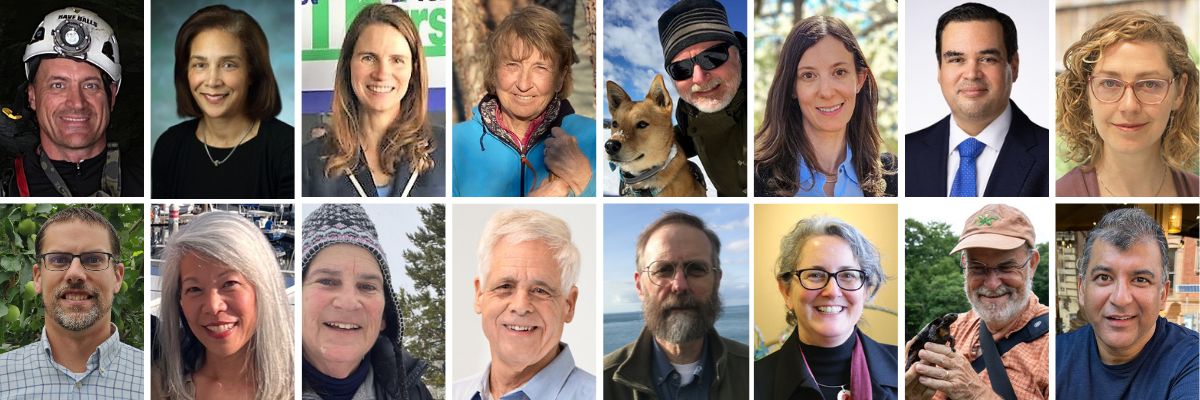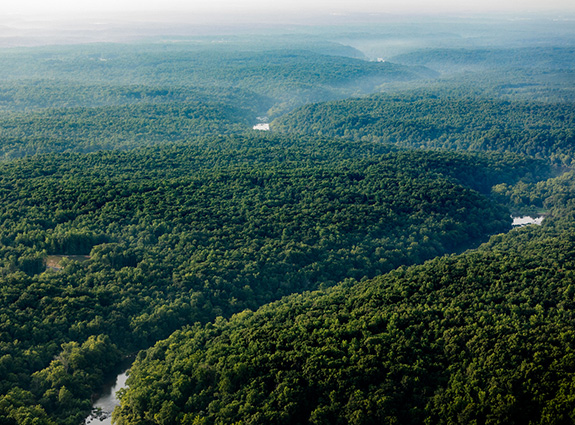For 50 years, NatureServe has been the authoritative source for biodiversity data throughout North America. We work with 60+ network organizations and nearly 1,000 conservation professionals to collect, analyze, and deliver biodiversity knowledge that informs conservation action.
Mission and Vision
We leverage the power of science, data, and technology to guide biodiversity conservation and stewardship.
NatureServe envisions a world in which the best available science informs conservation and stewardship decisions so that biodiversity thrives.
What is NatureServe doing to achieve our vision?
In our 2022-2026 Strategic Plan, NatureServe commits to playing an even greater role in protecting biodiversity by providing the best available science, data, and technology to support biodiversity conservation. Learn more about the values that are core to NatureServe and how we are investing in our future.
Who's Who

NatureServe's Board of Directors.
Leadership
- Anne Bowser - Chief Executive Officer
- Lori Scott - Executive Director
- Samantha Belilty - Director of Marketing and Communications
- Joshua Daskin - Chief Scientist
- Karen Smith Fernandez - Chief Advancement Officer
- Regan Smyth - Vice President for Conservation Science
Strategic Advisor
- Vishal Ahluwalia - New York
Board of Directors
- Bryce Maxell - Montana (Chair)
- Carolyn Hendricks - Maryland (Vice Chair)
- Jane Breckinridge - Oklahoma (Secretary)
- Nancy Weiss - Virginia (Treasurer)
- David Anderson - Colorado
- Anne Bowser - Virginia
- Francisco Carrillo - Maryland
- Sunny Fleming - North Carolina
- Chris Friesen - Manitoba
- Cindy Hewitt - Washington
- Deborah Lucas - Massachusetts
- Steven P. Quarles - Maryland
- John Trezise - Virginia
- Lori Scott - Virginia
- Alan Weakley - North Carolina

The Power of a Network
NatureServe is the hub of a large, impactful, and consequential Network of over 60 governmental and non-governmental programs located in the United States and Canada. Each day, Network Programs and their staff work to protect and conserve the plants, animals, and ecosystems in their jurisdictions.


NatureServe in Action
As rapid changes threaten our planet and all life that depends on it, someone must keep their finger on the pulse of the planet and its plants and animals whose future depends on conservation action. The NatureServe Network fills this role. We are on the front lines of halting the decline of biodiversity, with our focus on the prevention of species and ecosystem declines and the conservation of vulnerable species and the places most at risk of disappearing.
Our Impact
We are on the front lines of halting the decline of biodiversity, with our focus on the prevention of species and ecosystem declines and the conservation of vulnerable species and the places most at risk of disappearing.


Our Global Footprint
To protect threatened biodiversity, NatureServe works with over 1,000 conservation scientists to collect, aggregate, and standardize biodiversity information, providing comprehensive data and expertise to land use decision-makers for strategic conservation efforts.
50 Years of Conservation
NatureServe carries on a legacy of conservation work that began when The Nature Conservancy helped to establish the first state natural heritage program in 1974. Over the next two decades, The Nature Conservancy and a collection of public and private partners built a network of natural heritage programs in the United States to collect and manage data about the status and distribution of species and ecosystems of conservation concern.

Annual Reports
Awards
Each year NatureServe recognizes significant achievements in biodiversity conservation. We currently present two awards: the NatureServe Conservation Award and the Network Awards.
Testimonials & Accomplishments
For more than 50 years, leading conservationists and decision-makers have turned to the NatureServe Network as the most reliable source for biodiversity data and expertise.





